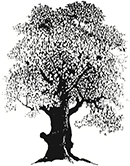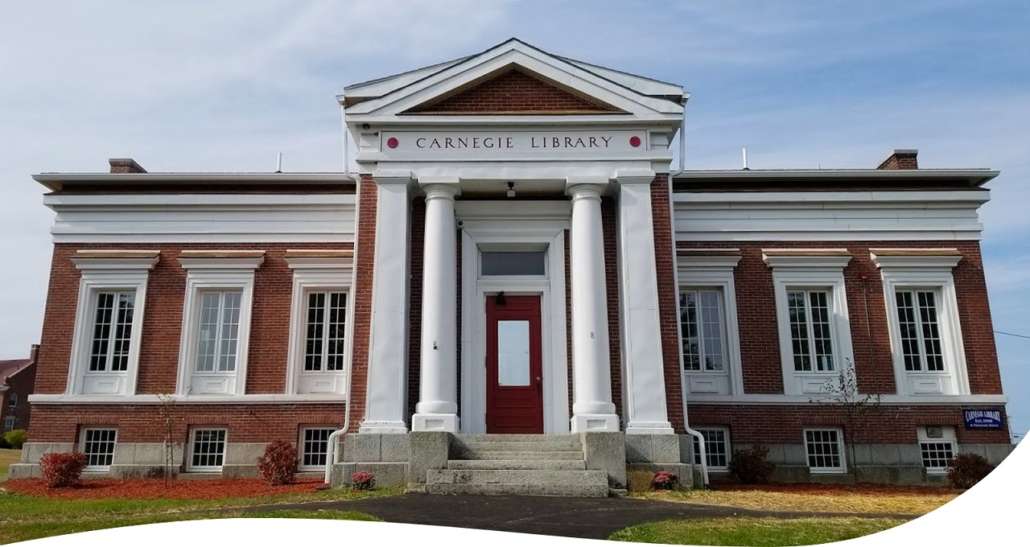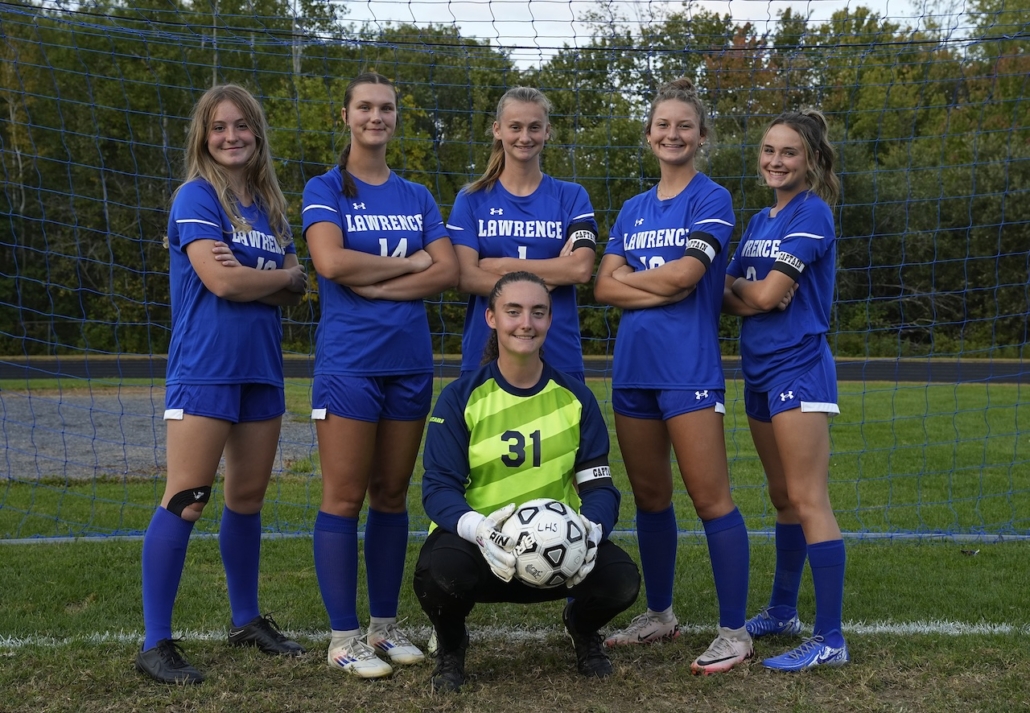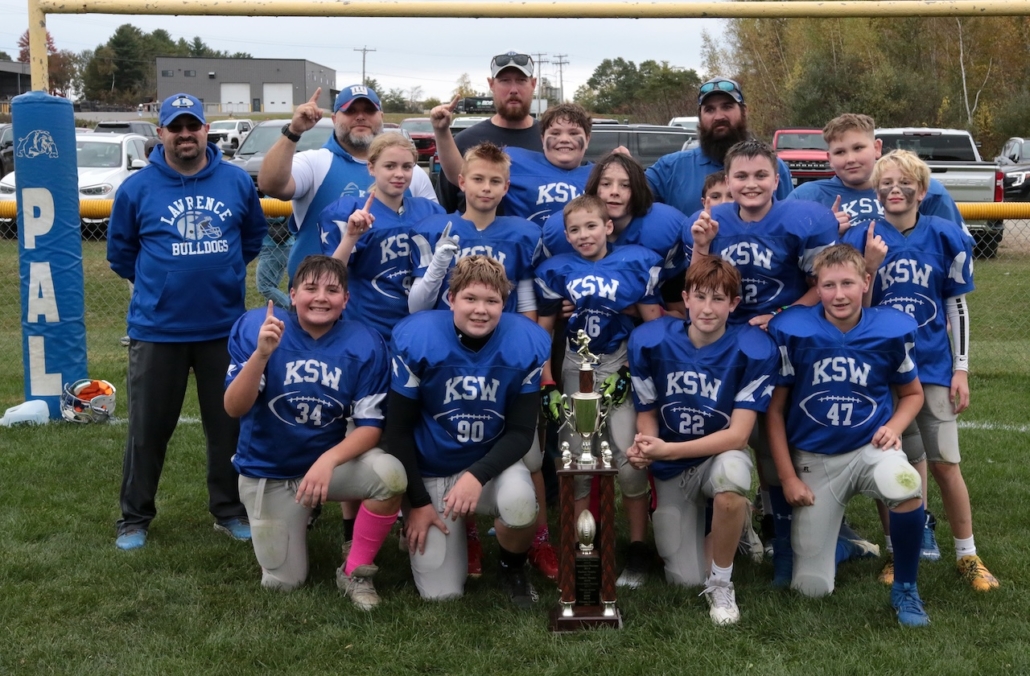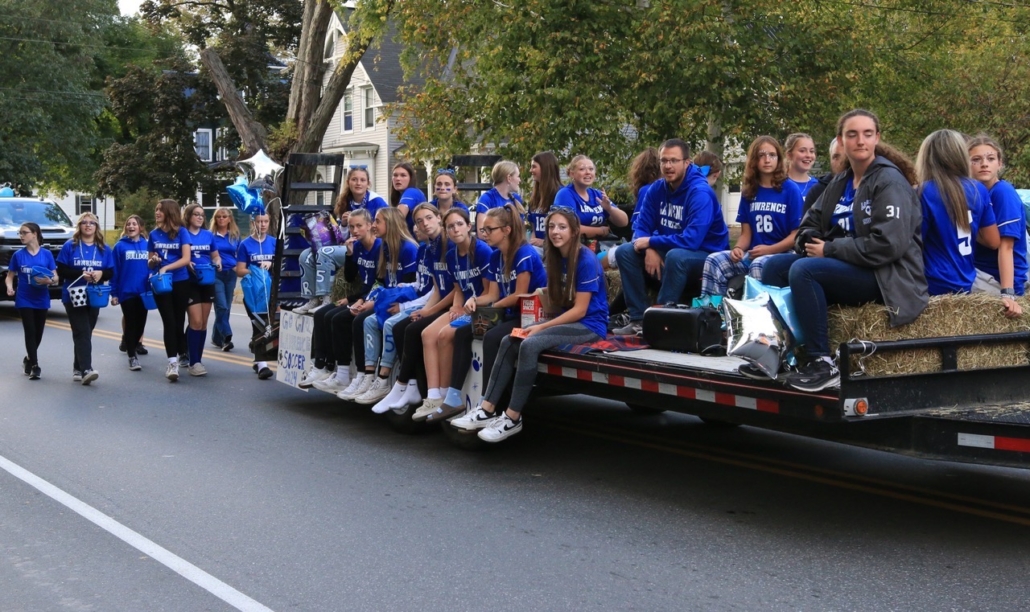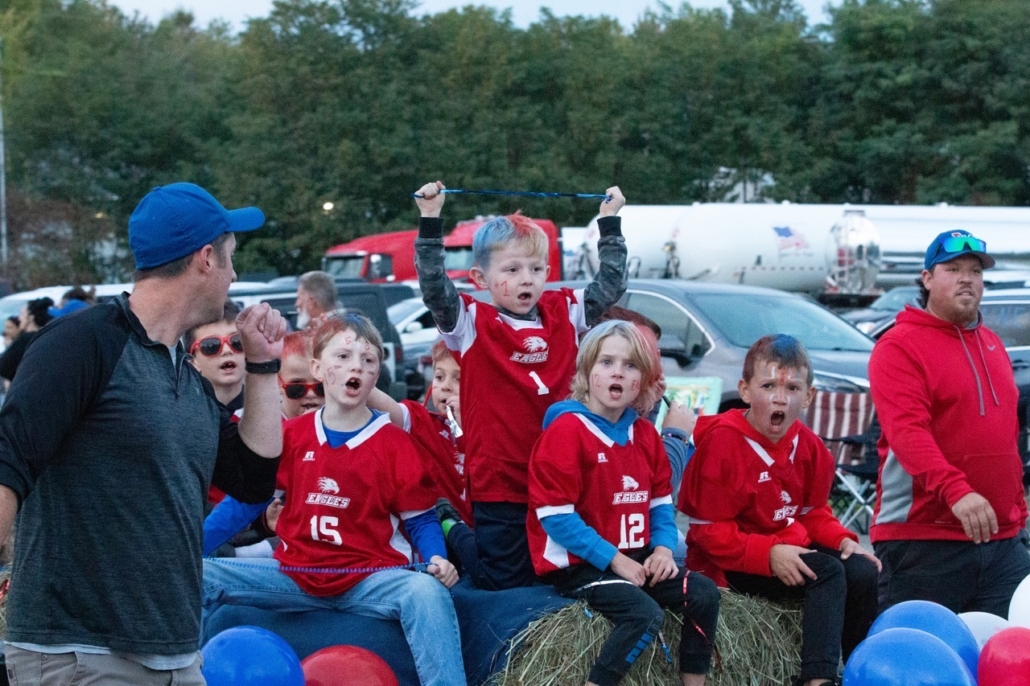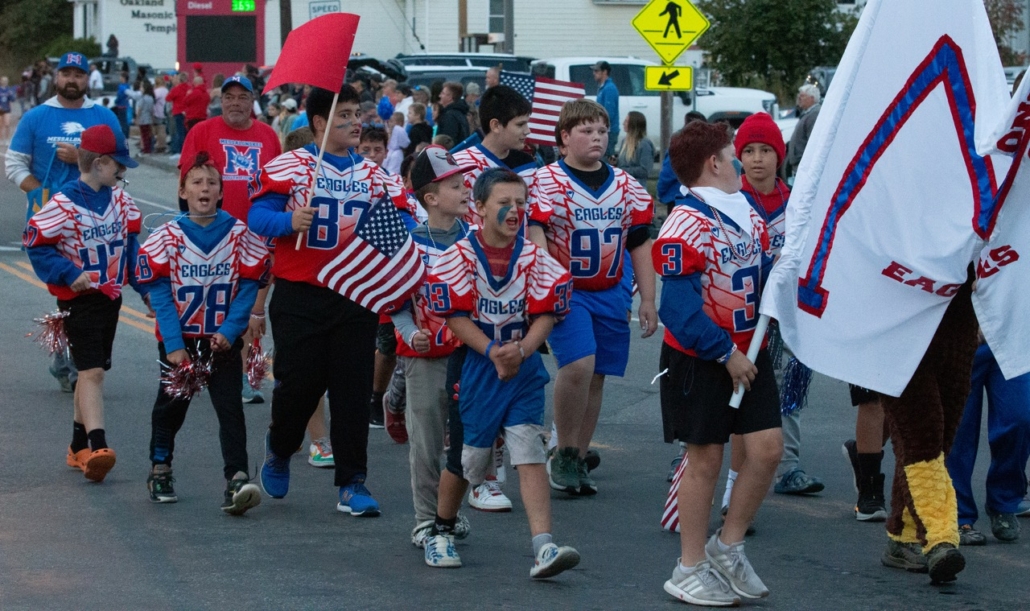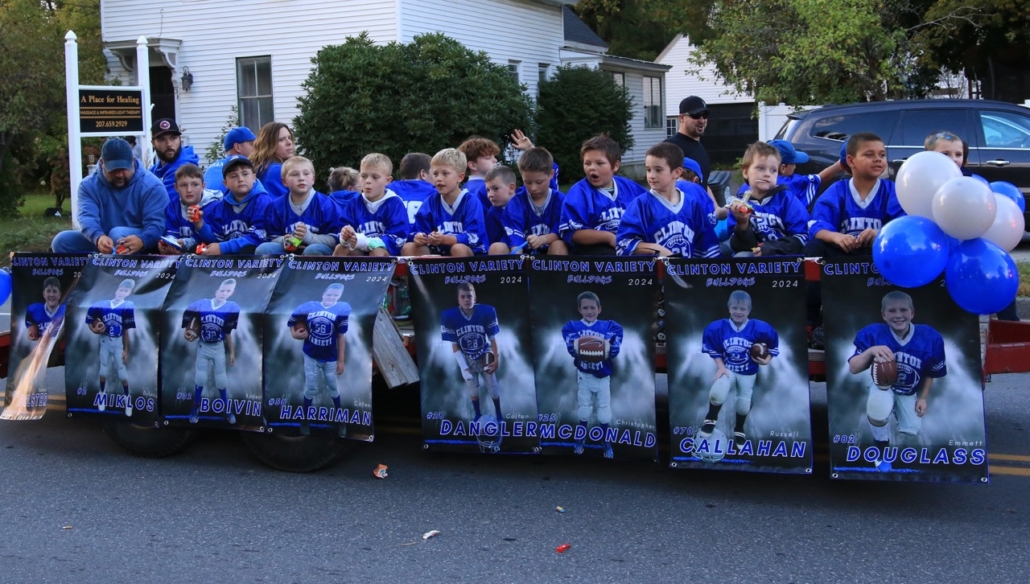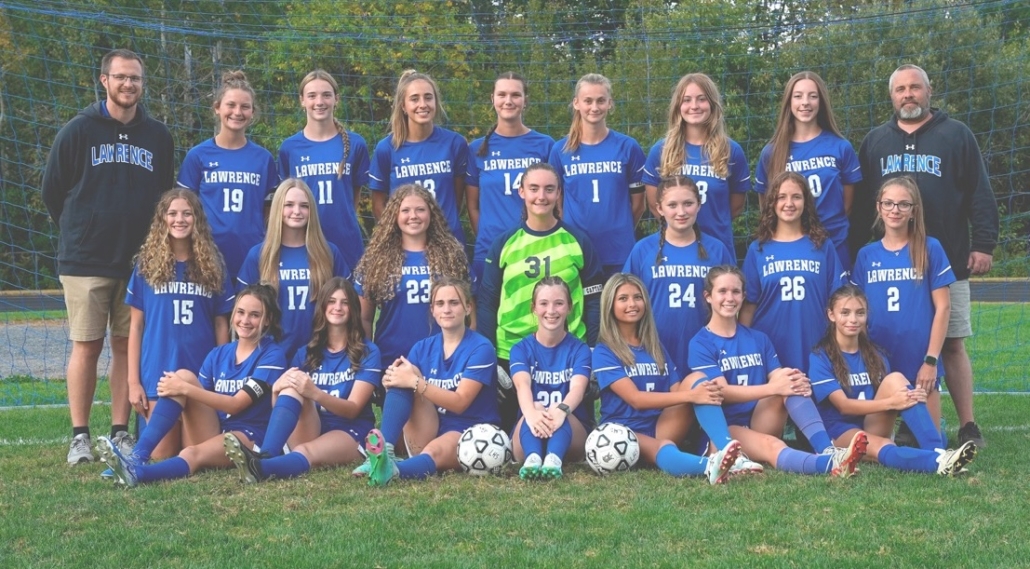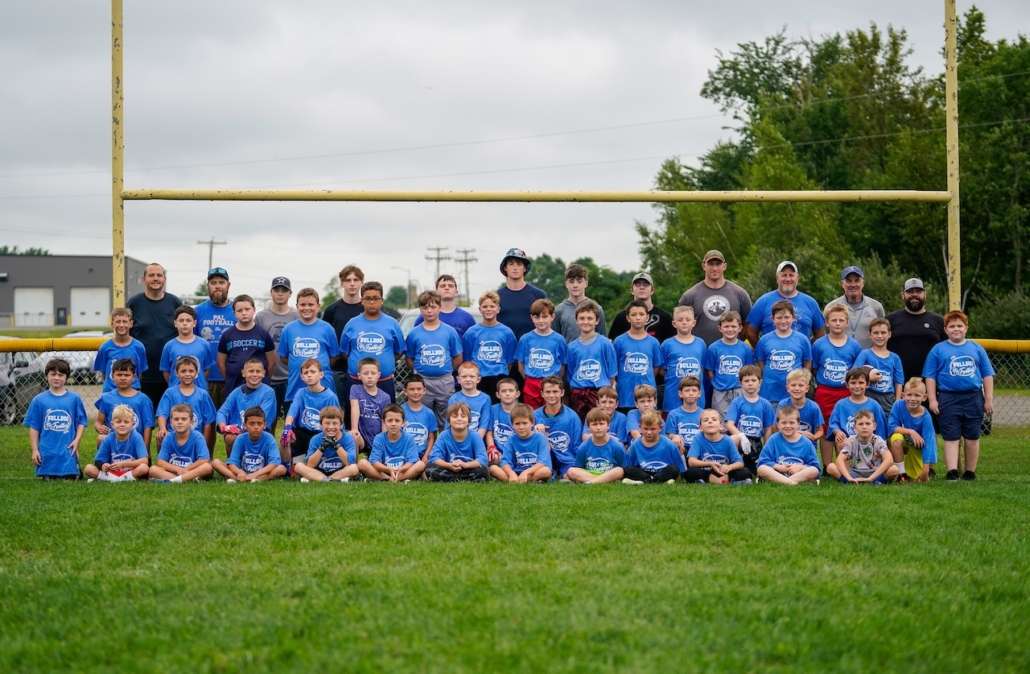Up and Down the Kennebec Valley: Education in Fairfield
by Mary Grow
After multiple postponements, this article really is about the history of education – elementary education; high schools next week – in Fairfield, the town next upstream from Waterville on the west bank of the Kennebec River. Your writer thanks the Fairfield Historical Society for generously sharing material on the topic.
The present downtown Fairfield is located on the river, near the southern border with Waterville. It was known as Kendall’s Mills until 1872.
The town had in the past six other villages that were business, manufacturing and/or social centers, still named on many maps. Along the river, running upstream, were Philbrook’s, Lyon’s, then Somerset Mills (now Shawmut); Nye’s Corner; and East Fairfield (now Hinckley). Inland, running roughly along roads connecting Oakland (south of Fairfield) to Norridgewock (north), were Fairfield Center; Quakertown, later Black’s Mills (now North Fairfield); and Larone.
* * * * * *
The 1988 Fairfield bicentennial history says the area was settled around 1771 and became a plantation in 1774. The Town of Fairfield was incorporated June 18, 1788. Its first town meeting was Aug. 19 of that year.
Not until 1793, however, according to the history, did voters support education. The measure that was passed is quoted: “to raise twenty five pounds to be paid in produce, corn and grain to be paid into the town treasurer for the use of the schools.”
The voters divided the town into five “classes” (apparently school districts), with five men appointed as overseers, each of the “class” he was in. These men were Elihu Boweman (Bowerman, who settled North Fairfield), Nymphus (Nymphas) Bodfish, Deacon John Tozer (Tozier), Joshua Blackwell and Captain William Kendil (Kendall, early Fairfield mill-owner).
A document in the Historical Society’s files says Josiah Burgess and Daniel Shepherd were the 1793 district-makers who drew the boundaries of each district. Three were inland, two on the Kennebec. In 1794, this source says, voters raised 60 pounds for education.
The Historical Society files include a paper titled School Houses. The author is not named and there is no date; it was written after 1892, because events that year are mentioned.
The author began: “It is certain that school houses had been built in several sections of the town prior to the year 1800.” He listed possible locations of four early buildings, all abandoned and some “taken down.” They might have been:
— On Norridgewock Road (now also Route 139), in North Fairfield, “north of the present residence of H. T. Choate”;
— On the road between Fairfield Center and East Fairfield, “near the cemetery”;
— On Ohio Hill, near Joshua Freeman’s farm (the present Ohio Hill Road runs from Fairfield Center to Nye’s Corner); and
— “[A]t or near the Center” – presumably Fairfield Center.
In 1803, the bicentennial history says, Fairfield was re-divided into 11 school districts. That and other sources continue: in 1826, there were 15 districts; in 1875, James Plummer was Fairfield’s first school supervisor; in 1879, there were 18 districts; in 1886, only 13 school buildings were “in good condition.”
A Dec. 7, 1842, clipping from the North American newspaper in Philadelphia described the fate of Fairfield’s Coval (Covell) schoolhouse: it burned down the evening of Nov. 23, 1842. Quoting another newspaper called The Clarion (an on-line source says a paper with that name was published in Skowhegan in the 1800s), the Philadelphia reporter said arson was the cause: “The Millerites had been holding a meeting in it, and it is supposed to have been set on fire by some opposed to such meetings.”
(Millerites were followers of William Miller, who believed that Christ’s Second Coming would occur in 1843 or 1844.)
School districts were abolished in 1893. In 1904, the bicentennial history says, there were 25 schools: “ten village [another source defines village as Fairfield, the business center on the Kennebec], thirteen rural, and two at Shawmut.”
The School Houses writer said that “probably one hundred years ago,” the North Grammar School lot, at the corner of Main Street and Western Avenue was home to “a small low building erected for school purposes and used for many years being the only school building in the village.”
About the time the Boston Company arrived (the Boston Company briefly owned mills in 1842), the writer said, the building was moved across the road and converted to a house. Later it was moved again, west on Western Avenue, and whenever the writer was writing, “still stands as one of the comfortable dwellings of that vicinity.”
The writer continued by mentioning “the first school in this section of town” in an Upper Main Street house (Main Street, also Route 201, is called Upper Main Street in more than one source). He listed two schools between 1845 and 1865, one in Mrs. Millie Philbrook’s house “where the Express Office now stands” and another in the old Bowling Alley, probably built in 1842.
The South Main Street schoolhouse was built about 1850. The writer said boys from the north and south schools fought each other at every opportunity. He added, “Some such feeling existed between the boys of Fairfield and Waterville and ‘sling shots’ and ‘iron knuckles’ made up a part of every boy’s armaments.”
School Houses includes a story the writer used to illustrate how discipline had changed. He claimed that a teacher, identified as the “wife of one of our present venerable citizens” had made a disobedient boy lie on the floor with his head toward the classroom door. When another boy “who had previously been sent from the room” opened the door to return, the door hit the troublemaker on the head
This penalty “was considered a just punishment for slight mischievousness,” the writer said. For more serious offenses, “justice was administered in larger doses of raw hide and feminine muscle.”
When the classroom was peaceful, the writer added, this teacher would frequently “have a French lad sing a French song” to keep things harmonious.
* * * * * *
Random references to school buildings are scattered through the bicentennial history.
An 1878 map of Fairfield Center shows a schoolhouse on the west side of the road leading south to Oakland. The accompanying text says the village had “the original Fairfield post office,” from 1807 until 1872, and was the town’s first business section.
The map shows the post office in a store south of the school and across the road, with a blacksmith shop and an unidentified “Shop” nearby. C. E. Hawes’ car (carriage?) shop is on the lot south of the schoolhouse. Farther north across the road are H. C. Burleigh’s store and the town house.
The town house began life as a union meeting house, until the Methodist Church was built on the north side of the intersection. The map shows the church at the intersection, and its parsonage a couple buildings north of the schoolhouse.
An on-line Fairfield history says the union meeting house was built in 1793-94, and in 1802, “the first permanent meeting house was established there” and served “as the town hall until 1875.” The still-standing church, identified on a contemporary on-line map as Fairfield Center United Methodist Church, was probably built in 1846.
An undated (probably also 1878) map of Shawmut, then called Somerset Mills, shows three rectangular buildings labeled “school houses.” They form three sides of a square facing south onto Main Street, which runs from what appears to be an earlier version of present Route 201 (Skowhegan Road) to the Kennebec River. The school buildings are at the intersection with the (unnamed) road.
The School Houses paper says two (not three) “old buildings near the county road” were “abandoned” after “the school building at Shawmut” was put up in 1892 (another source says 1898).
The village of Larone was in the north end of town, almost on the Norridgewock town line. The authors of the bicentennial history cited information – without dates – from an earlier Larone history by Will Winslow.
The Larone schoolhouse was “at what was called Whiting’s” (perhaps near Martin Stream, because a Whiting family had mills on the stream). It doubled as “a place of worship for all country gatherings.”
Winslow said the schoolroom was divided, with “the boys on one side and the girls on the other.” Its heating came first from a fireplace and later from “an old fashioned box stove.” He described the “high straight back seats” as narrow, hinged and designed for torture.
North Fairfield, the village between Fairfield Center and Larone that was first settled by Quakers in 1782, had its own post office until 1908, the bicentennial history says. A 1913 photograph labeled North Fairfield shows a group of buildings by a stream, including a corn shop, a blacksmith shop and a store; and atop a hill several hundred yards away, a white building identified as a schoolhouse.
This schoolhouse appears to be a one-story wooden building with a peaked roof, quite close to the road that disappears over the hill.
Main sources
Fairfield Historical Society Fairfield, Maine 1788-1988 (1988)
Fairfield Historical Society, records and files
Websites, miscellaneous.
